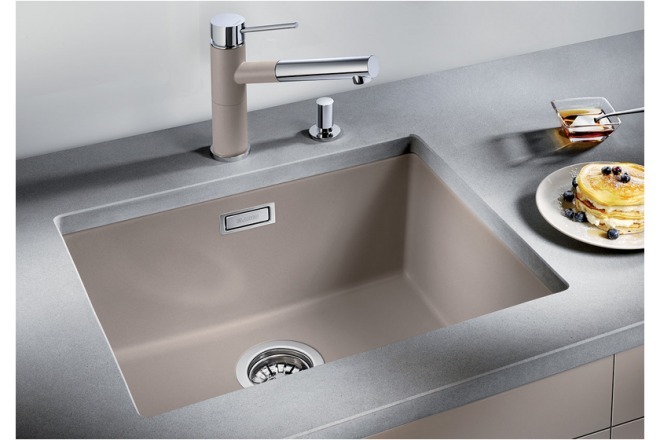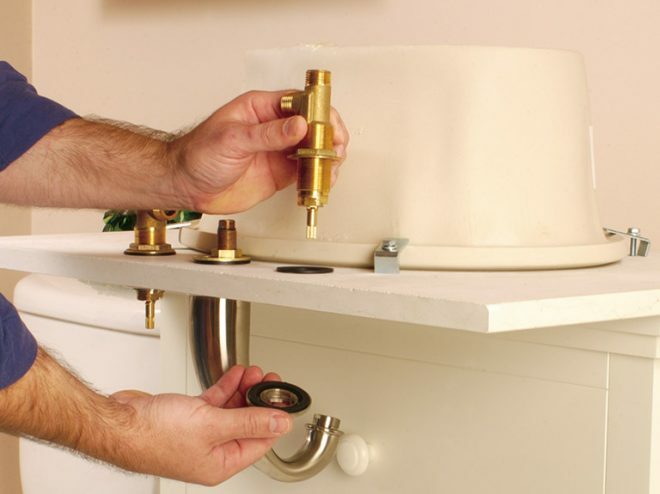Russia, Moscow region, Moscow+79041000555

 It takes ~ 2 minutes to read
It takes ~ 2 minutes to read
For every housewife, not only comfort and beauty in the kitchen, but also Flawless disposal of household grease in the kitchen. This is one of the main problems of blockage formation. A household grease catcher will help solve this problem.
What is it? Grease trap - a special installation that will allow you to separate the fat from the wastewater. It is installed under the kitchen sink and is connected in a special way to the sewage system.
Grease trap is in great demand in cafes, restaurants, canteens, etc. This is required by sanitary standards. However, at home, he is in great demand.

Main tasks
One of the main tasks of a grease trap for the kitchen is to protect the inside of the sewer pipes from household grease. Over time, the presence of fat in the interior of the pipes contributes to the accumulation of dirt and the occurrence of blockages.
A grease trap for the kitchen also helps prevent the development of bacteria and odors from the sewer. In private houses, a household grease trap will help solve the problem of clogging of drainage wells and gutters; this is a simple and easy to maintain construction.
If you take care of household plumbing, it will serve as a reliable assistant for many years.
Requirements
The requirements for the grease trap for the kitchen are quite simple:
- Must separate fat from wastewater;
- And reliably protect sewer pipes from sticking, accumulation of food kitchen waste.
Operating principle
The principle of operation of the grease trap for the kitchen is based on the difference in the density of water and fat. Food kitchen waste is usually deposited in wastewater in the lower layers. Fat has a density less than water, so it always stays on the surface. That is, heavy liquids push the lighter ones up - this is the basis of the principle of operation of the grease trap.
Options for household grease traps
A household grease catcher can be purchased at the store. For example, on the Internet there are a large number of online stores selling and installing grease traps for the kitchen. And also you can do it yourself.
Material
For its manufacture, you can use materials such as:
- fiberglass;
- steel;
- polypropylene;
- food grade plastic.
The above material can be used to make the product body. Also required plumbing silicone, building glue, thermoplastic materials with a diameter of 5 cm:
- tee;
- part of the pipe;
- knee.
Most often, plastic or fiberglass is used in the manufacture. These materials are convenient to use, their period of use is quite large at a low cost.
Dimensioning
Firstly grease catcher performance should be determined. To do this, use the following formula:
- P = n * S, where
- P - productivity (l / s);
- n is the number of sinks;
- S is the speed with which water is supplied (usually 0.1 l / s).

- V = 60 * P * t, where
- V is the volume;
- P is the installation performance calculated above;
- t - averaged sedimentation of fatty acids (usually 6 min)
Manufacture
The drawing and video are at the end of the article, but for now we’ll figure out what it consists of:
- Capacity for sedimentation of wastewater, consisting of several compartments;
- A tube (flexible, corrugated) that connects the sink to the grease trap;
- Tube (flexible, corrugated) designed to drain water into the sewer;
- Special storage tank for fat;
- Airtight lid to prevent odor.
Installation

Almost everyone in the kitchen installs a furniture set, trying to close the sink with a door. For correct operation and the convenience of its subsequent maintenance, when installing a grease catcher with your own hands, it is necessary to provide a spacing of at least 2 cm from the wall.
The surface of the bottom of the cabinet must be flat and installed without tilting. Otherwise, the oils and grease will overflow, and cleaning work will not be possible in a quality manner. After completing all the above steps, you can proceed with the installation.
Operating procedure:
- Place the grease trap under the sink;
- Connect the sink to the hole of the product using flexible pipes (corrugated). Care must be taken to ensure that the grease catcher is correctly oriented. It is necessary to make the connection from the side on most of the installation box, because it is there that fat will accumulate;
- We connect to the sewerage with the same flexible tubes (corrugated).
During installation, sealant must be used. This will more reliably fix the docking of the installation and flexible pipes, which will allow to avoid leakage and the release of unpleasant odor, which will certainly be formed.
Service

Grease trap maintenance work begins with the drive cleaning process. It must be pulled out, discarded with grease and oil. To determine how often the grease trap needs to be cleaned, it is necessary to carry out these works for several days in a row. In the future, the frequency of cleaning the installation will be clear.
Besidesabout once every six months open the grease trap and disinfect. Such work is necessary to prevent harmful bacteria and microorganisms.
Grease catcher drawing

Video: the principle of work, we do a do-it-yourself grease trap under the kitchen sink
With great interest I always read your comments to my articles. If you have any questions, feel free to ask them, leave, you are welcome, Your feedback in the form below. Your opinion is very important to me. Thanks to your criticism and thanks, I can make this blog more useful and interesting.
I would be very grateful if you rate this post and share it with your friends. This is easy to do by clicking on the social media buttons above. Do not forget the article you like Add to bookmarks and subscribe to new blog posts on social networks.


